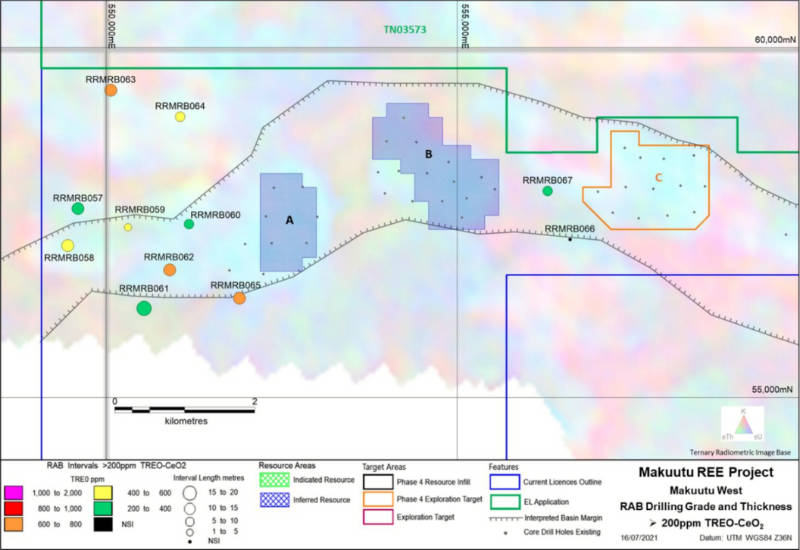Ionic drilling outlines potential Makuutu northeast extension

Pic: Tyler Stableford / Stone via Getty Images
Final assays from Ionic’s Phase 3 rotary air blast drilling across the Makuutu Western Zone has indicated that there’s further extension potential to the northwest.
Clay and saprolite mineralisation above the 200 parts per million (ppm) total rare earth oxide less cerium oxide (TREO-Ce) cut-off grade were intersected in 10 of the 11 holes.
Notable intervals were 12m at 675ppm TREO from 4m, 10m at 698ppm TREO from 6m (RRMRB063) and 10m at 678ppm TREO from 2m.
Significantly, RRMRB063 is located more than 2km north and west of the basin margin, leading Ionic Rare Earths (ASX:IXR) to apply for a 55.8sqkm exploration licence to the north of its existing licences.
A selection of samples from the RAB holes will be put through salt desorption testwork to confirm the proportion of ionic adsorbed rare earth content before the company confirms a plan for further drilling of these targets.
“These results are very promising, indicating the potential to further expand the rare earth bearing clay mineralisation at Makuutu,” managing director Tim Harrison said.
“We have moved swiftly to apply for the additional tenement and whilst we await the outcome of the application, we will review all of the targets and refine a longer-term plan for evaluating the growing list of newly identified resource extension potential at Makuutu.
“Right now, the focus is on the Phase 4 drilling program to get the infill core drilling completed and the mineral resource estimate updated to support the feasibility study.
“We will now complete some additional work to evaluate the growing list of extensional targets at Makuutu and plan for a larger exploration program to be initiated in due course.”

Makuutu West drilling
Drilling at the Makuutu West Zone targeted untested radiometric responses both within and outside the mineralised sedimentary basin.
All six holes targeting the basin extension west of Area A intersected rare earth mineralised clay and saprolite profiles with three intersecting mineralised weathered basin sediments.
Further drilling, extraction testwork and mineralogy studies will be conducted to evaluate the extent of the mineralisation and the potential for resource expansion.
At the northwest radiometric target, both holes intersected rare earth mineralised sandy clay and saprolite above fresh granite.
Extraction testwork and mineralogy studies are required to determine if any extractable ionic or colloidal rare earths are present.
Additionally, two of the three at the Exploration Target C extension intersected relatively low-grade TREO in clay with sand.
Further drilling will be considered following receipt of results from the current Phase 4 resource infill drilling of Exploration Target C.
This article was developed in collaboration with Ionic Rare Earths, a Stockhead advertiser at the time of publishing.
This article does not constitute financial product advice. You should consider obtaining independent advice before making any financial decisions.
Related Topics

UNLOCK INSIGHTS
Discover the untold stories of emerging ASX stocks.
Daily news and expert analysis, it's free to subscribe.
By proceeding, you confirm you understand that we handle personal information in accordance with our Privacy Policy.








